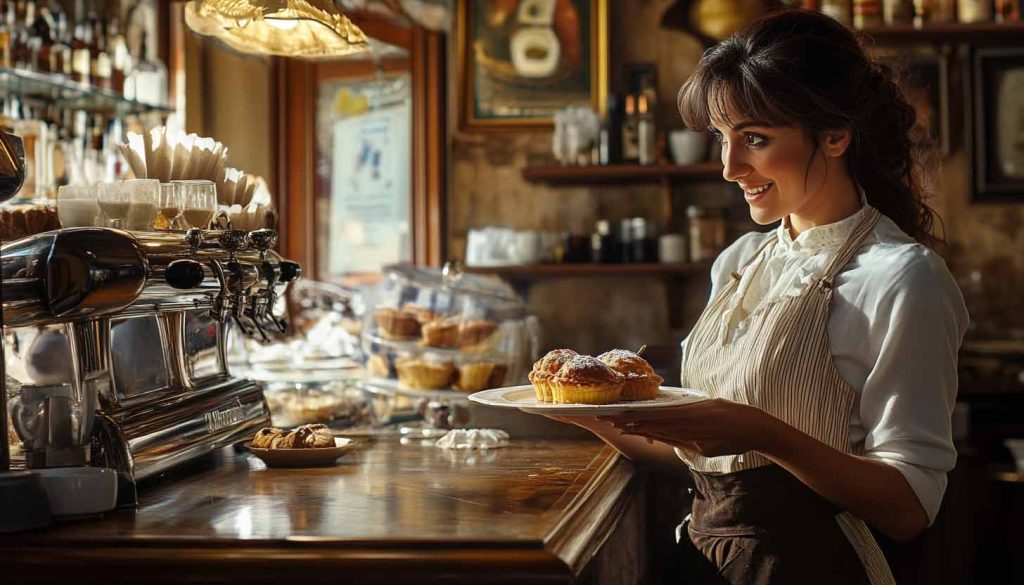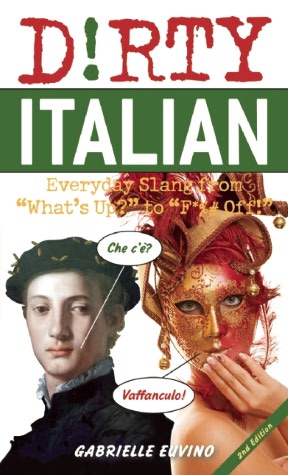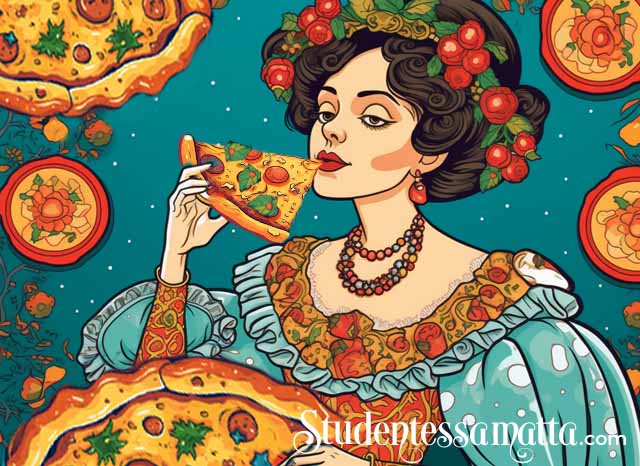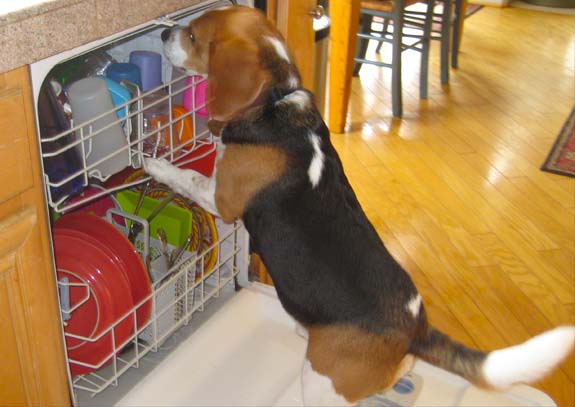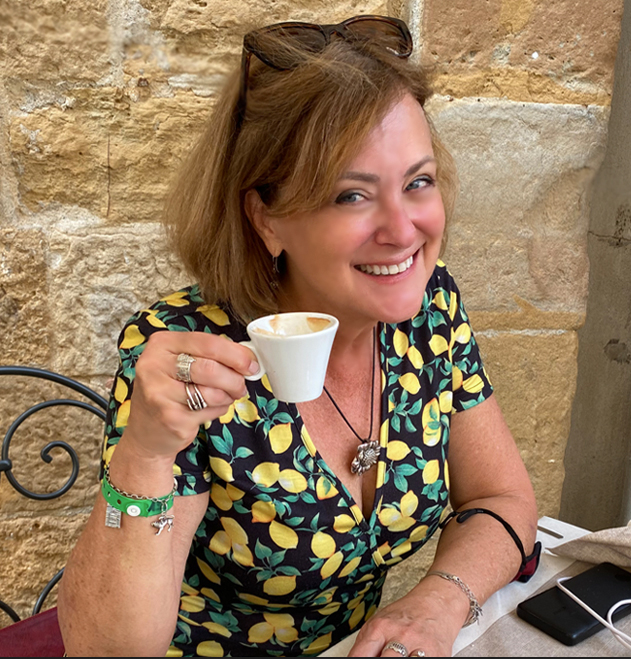
Dal profumo di caffè al panico al bancone: sopravvivere alla colazione italiana!
From scent of coffee to panic at the counter: how to survive ordering Italian breakfast like a pro!
Colazione all’italiana! Ordering breakfast at the bar like a local
How to Order Breakfast Like an Italian: Coffee & Pastries at the Bar
Sei in Italia. È presto. Mentre passeggi per una stradina affascinante, il profumo del caffè appena fatto riempie l’aria. Poi—aspetta!—senti l’aroma di cornetti burrosi e pasticcini dolci. Segui il tuo naso… e scopri che tutto proviene da… un BAR?!
You’re in Italy. It’s early morning. As you stroll down a charming street, the warm scent of fresh espresso fills the air. Then—hold on!—you catch a whiff of buttery cornetti and sweet pasticcini. You follow your nose… and discover the delicious aroma is coming from… a BAR?!
“Un bar?!” ti chiedi. “E non ho nemmeno fatto colazione!”
“A bar?!” you wonder. “And I haven’t even had breakfast yet!”
Apri la porta ed entri in un mondo di macchine da caffè lucide, tazzine tintinnanti, chiacchiere vivaci e una vetrina piena di dolci che sembrano usciti da un sogno. Pensi: Nessun problema—ce la posso fare! Basta chiedere un caffè e un pasticcino. Facile, no?
You step inside and find a world of gleaming espresso machines, clinking cups, lively chatter, and a glass case full of dream-worthy pastries. You think: No problem—I’ve got this! Just ask for a coffee and a pastry. Easy, right?
Ma poi… la signora dietro al banco ti fissa. Aspetta. E tu? Bloccato. Invece di chiedere il tuo cornetto alla crema, punti il dito come un bambino.
But then… the woman behind the counter stares. She waits. You? Frozen. Instead of asking for your cornetto alla crema, you point like a toddler.
Poi il barista si sporge oltre il bancone e sorride: “Cosa prende? Un cappuccio? ” Tu annuisci… e dentro di te vai nel panico — cos’è un cappuccio? Io volevo un cappuccino!
Then the barista leans over the counter, smiling: “What will you have? A cappuccio? You nod… and silently freak out inside — what’s a cappuccio? I wanted a cappuccino!
Succede! Anche chi studia italiano da tempo può sentirsi spaesato. Ma non temere—ci pensiamo noi! Ecco perché ti stiamo preparando con il vocabolario essenziale, frasi amichevoli e modi educati per ordinare come un vero italiano—con sicurezza e stile!
It happens! Even seasoned Italian learners can get a little flustered. But don’t worry—we’ve got your back! That’s why we’re prepping you with the essential vocabulary, friendly phrases, and polite ways to order like a true Italian—with confidence and style.
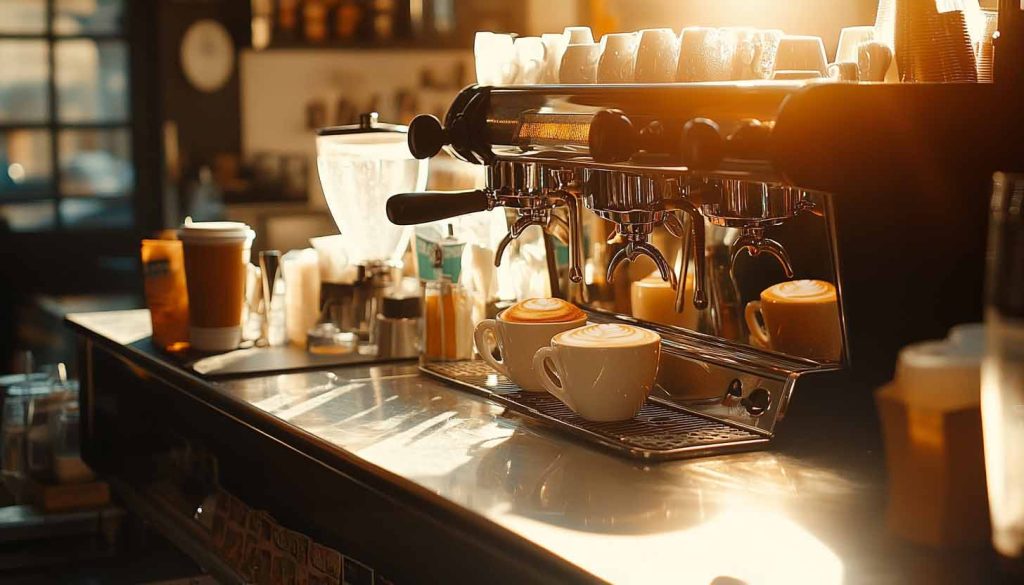
Cos’è davvero un “bar” italiano?
What is an Italian “bar,” really?
In Italia, un bar non è affatto un “dive” americano con luci al neon e cocktail appiccicosi. È un punto di ritrovo essenziale: un luogo dove iniziare la giornata con un cappuccino schiumoso e un cornetto appena sfornato, serviti con eleganza dietro un bancone di marmo luccicante.
In Italy, a bar is nothing like an American dive with sticky counters and neon lights. It’s a social hub—where mornings begin with frothy cappuccinos and freshly baked pastries served from behind a shining marble counter.
Il cuore della giornata: dal caffè mattutino all’aperitivo serale
The heart of the day: from morning espresso to evening aperitivo
Durante il giorno, i bar italiani offrono una pausa veloce per un caffè o uno snack. La sera, si trasformano in locali per un aperitivo con amici—Spritz, Americani, Negroni e vino buono accompagnati da patatine, noccioline e tartine. Cena? Forse non necessaria!
During the day, Italian bars offer a quick break for a coffee or a snack. In the evening, they transform into spots for an aperitivo with friends—Spritz, Americanos, Negronis, and good wine served with chips, nuts, and little appetizers. Dinner? Maybe not even necessary!
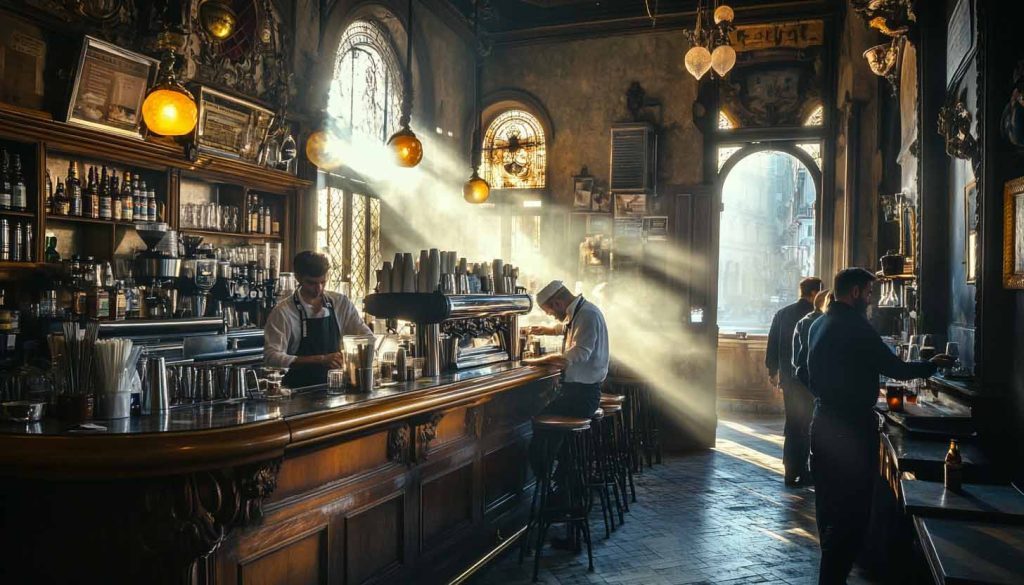
Etichetta del bar la mattina: come ordinare un caffè e una pasta
Morning bar etiquette: how to go about ordering a coffee and a pastry
Prima seleziona un dolcetto guardando la vetrina dei pasticcini e chiedi gentilmente di aggiungerlo al tuo ordine. Poi si paga alla cassa, si riceve uno scontrino e si consegna al barista.
First, check out the glass vetrina of pastries and politely ask to add your favorite treat to the order. Then pay at the register (the cassa), get a receipt (scontrino), and hand it to the barista who will then prepare your coffee drink.
Vocaboli essenziali da conoscere al bar
Must-know bar vocabulary
Cassa
Scontrino
Bancone
Vetrina
Tavolino
In piedi al bancone
Cash register
Receipt
Counter
Glass display
Table (if you sit, possible surcharge!)
Standing at counter (no extra charge)
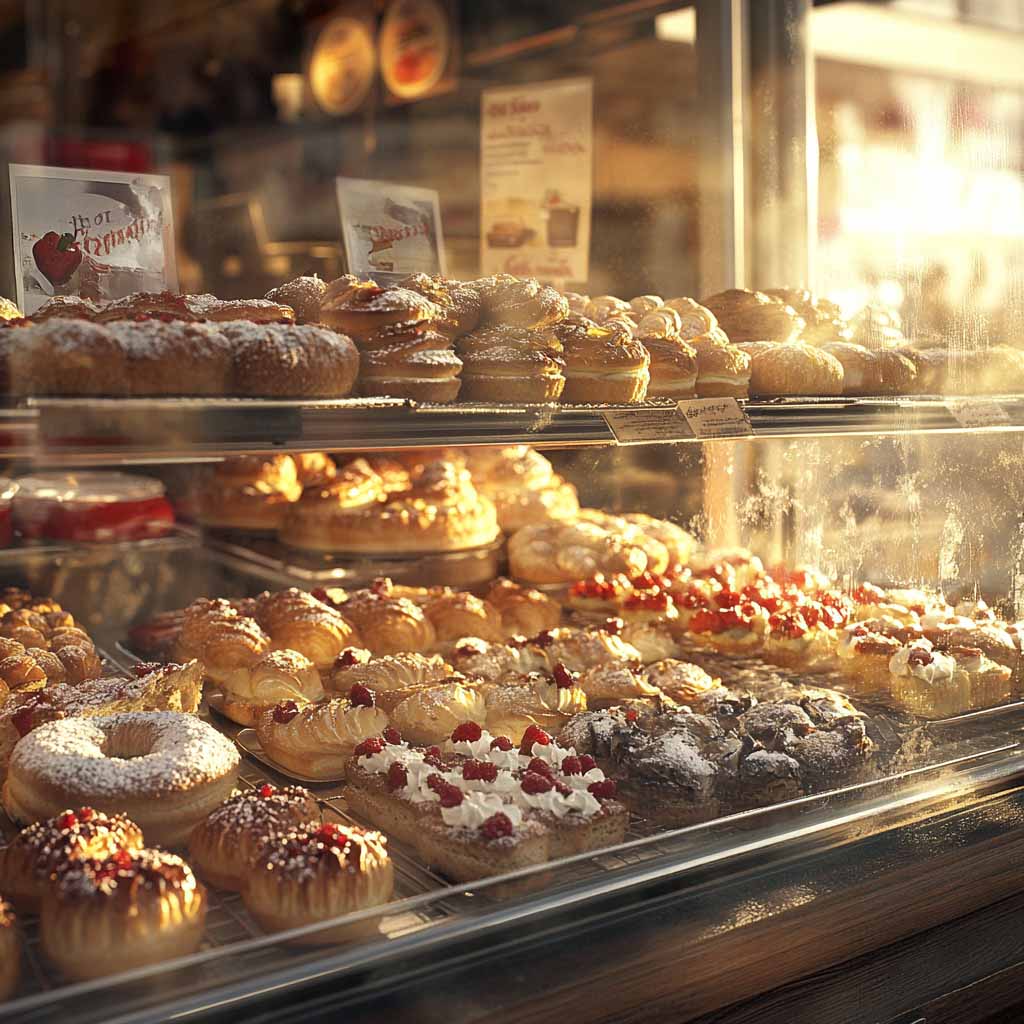
Pastries galore! I dolci per la colazione
Sweet breakfast bliss! Typical pastries to order
La pasticceria italiana è un piccolo paradiso di bontà… e spesso la trovi proprio dentro il bar! Il termine pasticceria può indicare sia il dolce stesso, sia il reparto dei dolci—quella magnifica vetrina di vetro piena di delizie appena sfornate che ti accoglie non appena entri. Basta uno sguardo per far venire l’acquolina in bocca!
Italian pasticceria is a little paradise of sweetness… and you’ll often find it right inside the bar! The word pasticceria can refer both to the pastry itself and the pastry section—the glorious glass display case filled with fresh delights that greets you as soon as you walk in. One look is all it takes to get your mouth watering!
Varianti del cornetto / Cornetto varieties
Pasticceria
Pasticcino
Dolcetto
Dolce
Brioche
Cornetto
Pastry or pastry shop
Small pastry (generic term)
Literally “little sweet”
General term for dessert or sweet
INorthern Italy = croissant-like pastry
Centra Italy = croissant (often filled)
Cornetto semplice
Cornetto alla crema
Cornetto al cioccolato
Cornetto alla marmellata
Cornetto integrale al miele
Plain croissant
Filled with custard
Filled with chocolate
Filled with jam
Whole wheat w/honey (healthier option!)
Saccottino al cioccolato
Treccia
Girella
Fagottino
Cannolo
Sfogliatella (riccia o frolla)
Bombolone
Like a French pain au chocolat
A twisted, often glazed pastry
A spiral pastry (with raisins, chocolate, or jam)
“Little bundle” – puff pastry with fruit or cream
Sicilian treat filled with sweet ricotta
Iconic Neapolitan flaky pastry
Italian doughnut, cream or chocolate-filled
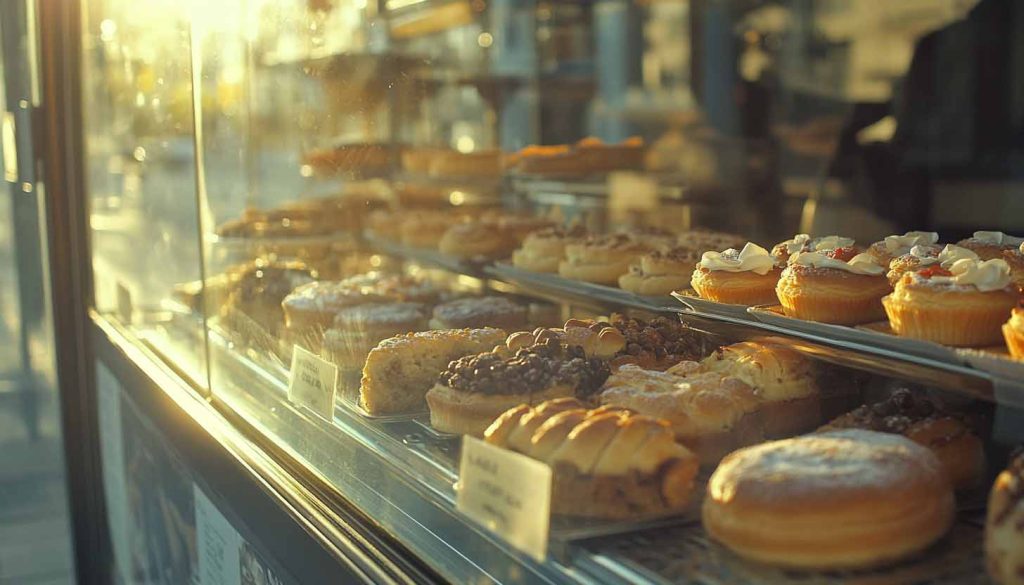
Curiosità linguistica! – Che bel pasticcio!
Italian Language Curiosity! – What a mess!
Attenzione! In Italia, la parola “pasticcio” non si riferisce solo a un piatto delizioso o a un dolcetto. Usata come espressione idiomatica, “Che bel pasticcio!” significa “What a mess!” o “What a muddle!” È un modo simpatico e ironico per commentare una situazione caotica o un errore… anche se suona dolce, non è proprio un complimento!
Be careful! In Italian, pasticcio isn’t always about something tasty. As an idiom, “Che bel pasticcio!” is used to describe a mess, confusion, or a tricky situation—think of it as the Italian equivalent of “What a fine mess!” It may sound sweet, but it’s not exactly a compliment!
“Hai cancellato tutto il file per sbaglio? Che bel pasticcio!”
“You accidentally deleted the whole file? What a mess!”

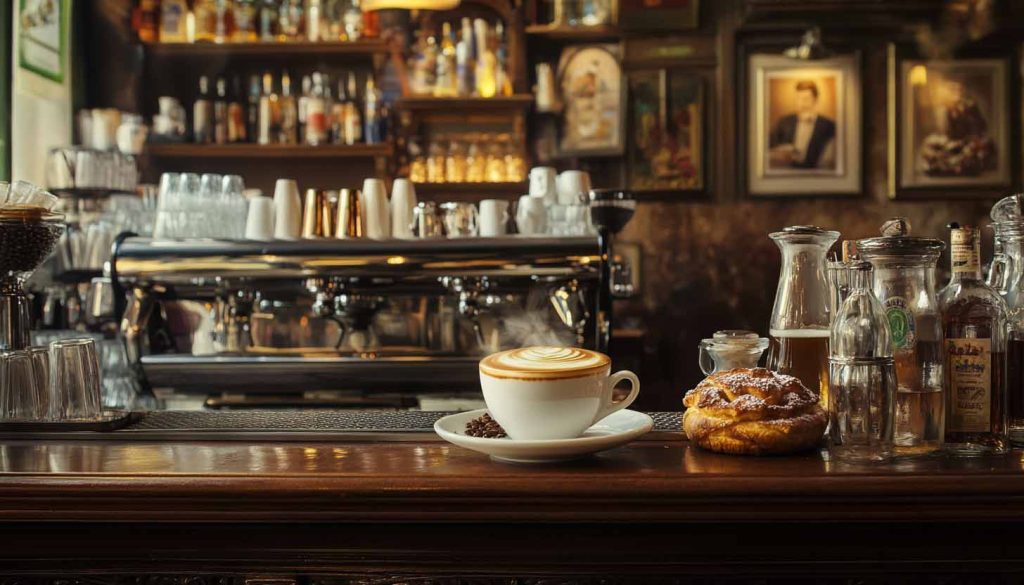
E il caffè? Facciamolo all’italiana!
And coffee? Let’s do it the Italian way!
Dimentica il tuo “decaf-grande-oatmilk-vanilla-caramel-latte with whip on top.” In Italia le cose sono più semplici (e gustose).
Forget your ‘decaf-grande-oatmilk-vanilla-caramel-latte with whip on top.’ In Italy, things are simpler (and tastier).
Varianti del caffè / Coffee varieties
Un caffè
Un cappuccino
Un macchiato
Un caffè lungo
Un marocchino
Un caffè shakerato
A single shot of espresso
Espresso + steamed milk foam (before 11 a.m.!)
Espresso & splash of milk — more bang for Euro!
A slightly diluted espresso
Espresso, cocoa, foam, served in a glass
Iced, shaken espresso – summer’s delight!

Curiosità – Perché “cappuccio”?
Why do Italians call a cappuccino a “cappuccio”?
In Italia, se entri al bar e chiedi “Un cappuccio, per favore”, stai semplicemente ordinando un cappuccino—con un tocco di familiarità e abbreviazione tutta italiana!
In Italy, asking for “un cappuccio” at the bar is just a quick, casual way to order a cappuccino. It’s short, friendly, and oh-so-Italian!
Ma da dove viene il nome? Il termine cappuccino deriva dai frati Cappuccini, noti per il colore marrone chiaro dei loro mantelli… lo stesso colore della bevanda quando caffè ed espresso si mescolano con il latte!
But where does the word come from? “Cappuccino” is actually inspired by the Capuchin friars, whose light brown robes matched the creamy color of the coffee mixed with milk!
Curioso, no? “Cappuccio” in italiano significa anche cappuccio del cappotto o hood, proprio come quello dei frati. Quindi la prossima volta che chiedi un cappuccio… ricorda che stai ordinando una bevanda con origini “monastiche”!
And here’s a twist: “cappuccio” also means hood, like the one on their robes—or your coat! So next time you order “un cappuccio,” know that your cozy cup of coffee has holy (and hooded!) origins.

Come ordinare educatamente – Il condizionale
How to order politely – Using the conditional
In Italia, la cortesia è tutto. Usa il condizionale per essere gentile. Si tratta di un tempo verbale che esprime un desiderio o una richiesta educata.
In Italy, politeness is everything. Use the conditional tense to be courteous. It’s a verb tense that expresses a wish or a polite request.
Frasi utili:
Vorrei un cappuccino.
I would like a cappuccino.
Potrei avere una macchiata?
Could I have a macchiata?
Mi piacerebbe provare quel dolcetto.
I’d love to try that pastry.
Cosa c’è di buono oggi in vetrina?
What goodies do you have today in the display?

Sei pronto per la tua colazione italiana?
Ready for your Italian breakfast adventure?
Ora, si! Sei pronto per ordinare caffè e pasticcino come un vero professionista in un bar italiano! Mi raccomando! Non dimenticare di puntare la sveglia e arrivare presto—le deliziose paste spariscono in fretta! Non vorrai ritrovarti davanti a una vetrina vuota chiedendoti dove siano finiti tutti i bomboloni. Non c’è niente di meglio del primo sorso di caffè caldo e profumato del mattino. Ahhh… Ora sei davvero pronto per iniziare la giornata—all’italiana!
Ok! Now you’re ready to order a coffee and pastry like a true pro in an Italian bar! Just a heads-up—don’t forget to set your alarm and get there early—the delicious pastries disappear fast!You don’t want to be left staring into an empty vetrina, wondering where all the bomboloni went. There’s nothing quite like that first sip of rich, aromatic morning coffee. Ahhh… Now you’re ready to kick off your day—all’italiana!
🇮🇹 Un consiglio dalla Matta 🇮🇹
Matta Italian Language Tip!

“Mettere qualcosa sotto i denti!”
Why do Italians need to “Put something under their teeth!”
It means — I need to eat something!
🇮🇹 Un consiglio dalla Matta 🇮🇹
Matta Italian Language Tip!

“Fare colazione”
In English, we say “to have breakfast,” but in Italian, they use the verb fare — fare colazione — which literally means “to make or do breakfast.”
Why? Because in Italian, breakfast is considered an action or daily routine, much like:
fare la spesa (do the shopping)
fare una passeggiata (go for a walk)
fare una pausa (take a break)
Quindi… domattina non “avere” colazione… falla come un’italiana!
So tomorrow morning, don’t “have” breakfast… do it like an Italian!
